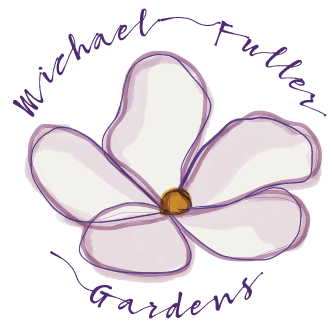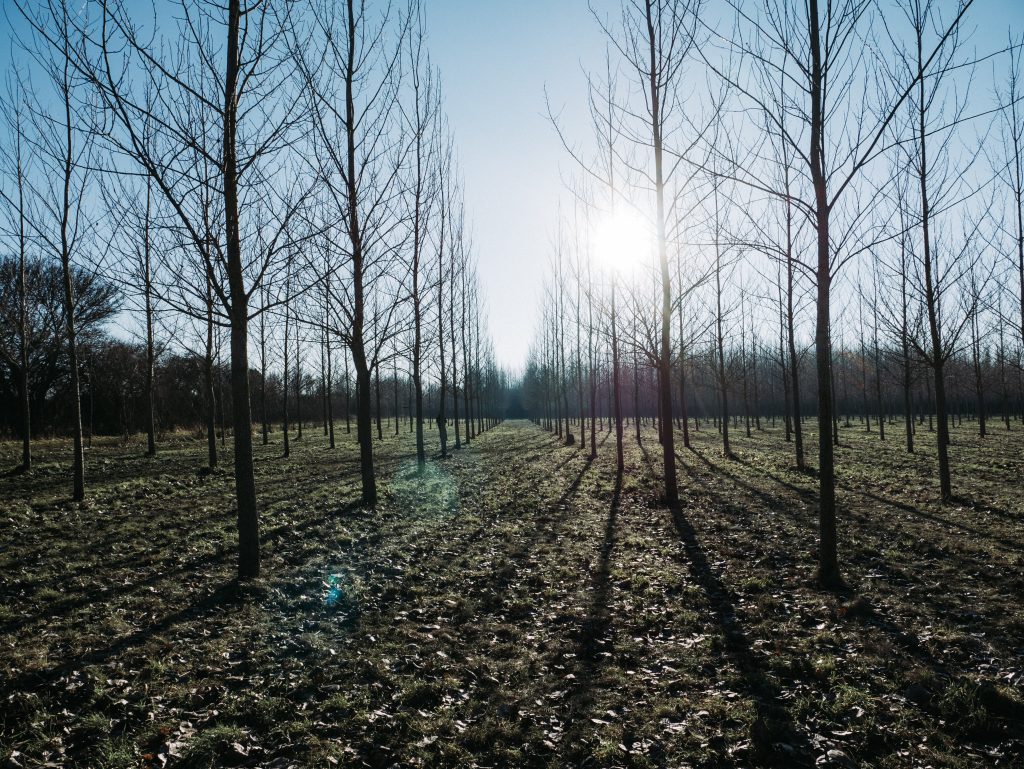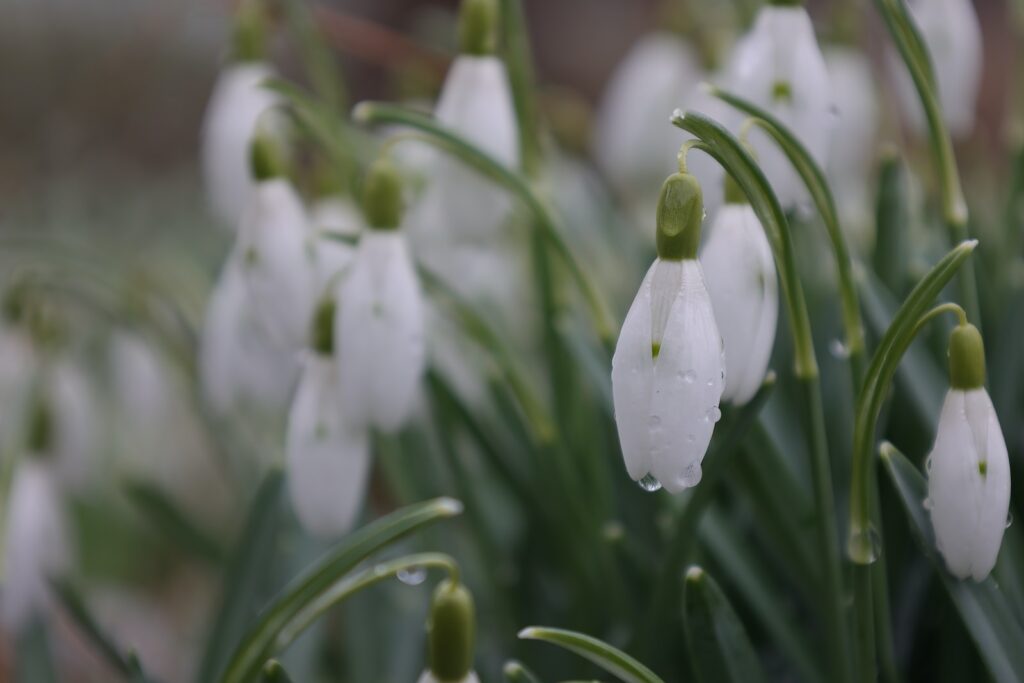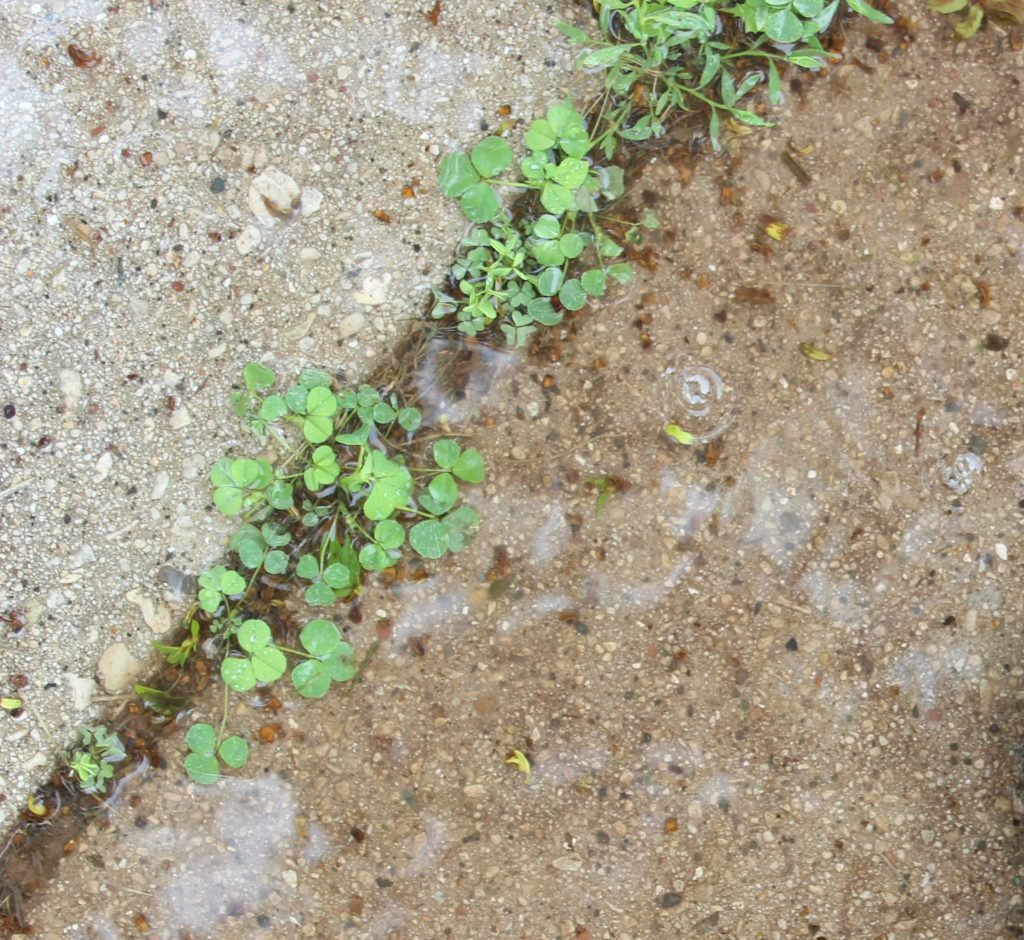Bulb planting in October.
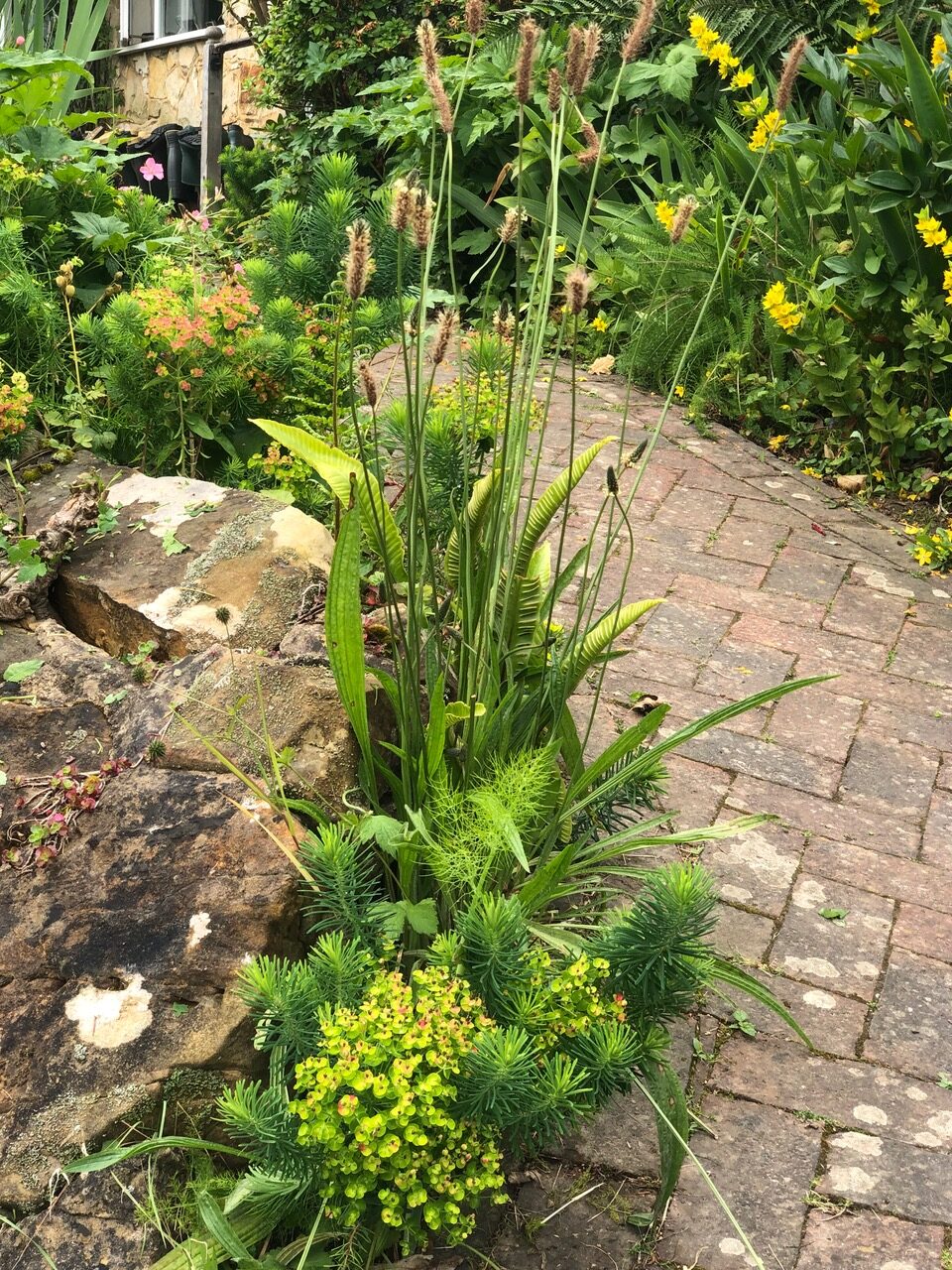
The two sister festivals of the Autumn Equinox on the 21st of September and Michaelmas on the 29th, mark a significant change in the cycle of the year. As we enter the month of October the days become shorter, the darkness becomes more palpable, and we start to look towards the winter with all its qualities. Glennie Kindred writes in her book The Earth’s Cycle of Celebration.
“This is the beginning of root energy, bringing rest and renewal in the dark. This is the chance for us to go within and re-enter the dark womb of the spiritual world which provides a strong foundation for our lives, it is an opportunity to explore and understand ourselves”.
There are many ways that we can mark this turning point, one is to plant spring-flowering bulbs. The symbolism of burying a seed within the dark soil, which then passes through the winter only to bloom the following spring, is a simple and profound act that mirrors the inner journey we travel in this part of the year. October is a good month for bulb-planting: the soil is still warm from the summer but also moist from autumn rains, providing the perfect environment for the bulb. I will be planting wild daffodils – the “Lent Lily” (Narcissus pseudonarcissus), as well as Snakes-head Fritillaries (Fritillaria Meleagris) and Snowdrops, all in groups within meadows and under trees. These plants are semi-native and are restrained in their flowering: for me, this feels more appropriate than some of the more garish bulb specimens. As I have previously written, whilst showiness in spring bulbs has value, I prefer to stick to the muted palate of these more native species; they are usually grown in this country and therefore seem to keep me more connected to the environment and soil of my part of the world, helping me retain an inner connection to the intentions outlined above. Additionally, they bloom around the Spring Equinox and Lent, two further sister festivals, this time festivals of quiet expectation and hope, which for me can best be expressed in the garden with the humble beauty of these more native flowers.
Whatever bulbs are chosen, they must be planted at the correct depth and the soil compacted firmly above them, otherwise, squirrels and other digging animals may discover them. Watering is not required as the winter will provide enough moisture, and it is worth remembering that in the first year they will probably bloom later than usual, as they will take time to establish themselves.
A happy accident?
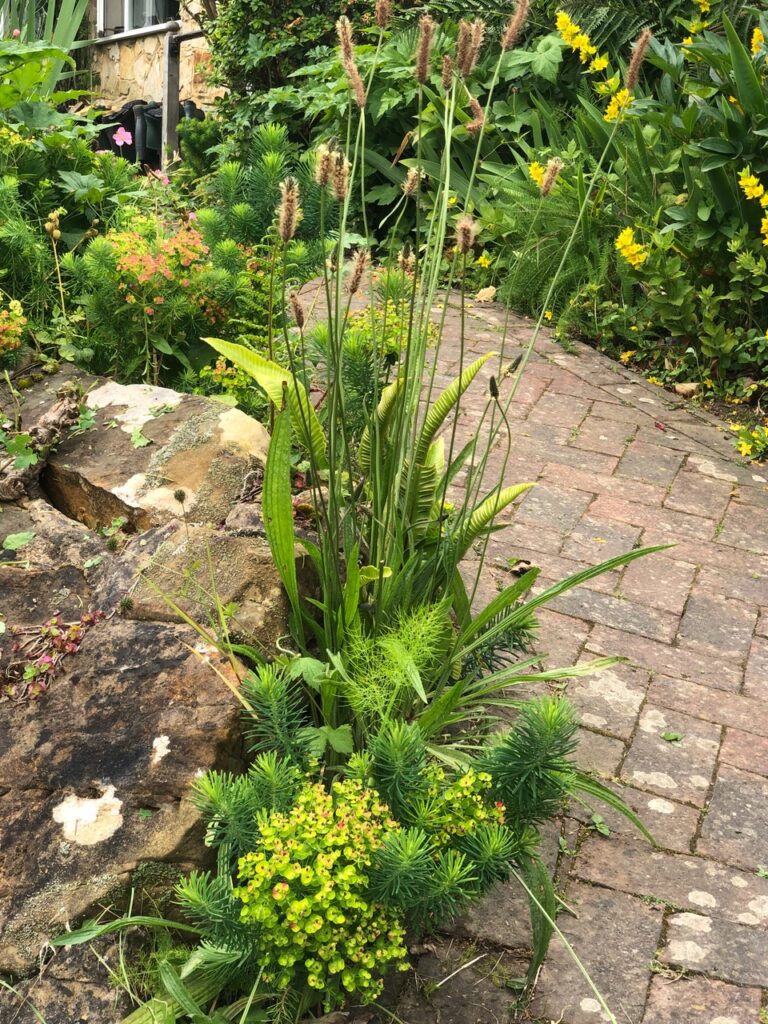
Whilst working in a garden recently I came across a stunning bouquet of plants, squeezed in next to a rock on the edge of a path: a combination of a small euphorbia, a harts-tongue fern and a slender plantain dividing the two. It is likely that none of the plants were intended for this place, especially not the plantain, a garden ‘weed’, but the group was special, so special that I kept coming back to take the perfect photo. After fifteen photos I’m still not sure whether the picture displayed here does justice to this trio, but in the garden, the combination of textures, shapes, colours and forms of each plant was absolutely perfect, particularly the slender upright stalks of the plantain holding everything together effortlessly.
Thinking about this later, I felt I had been given a valuable lesson: perhaps I should let nature with her simple wildness into the garden more often? She seems to know how to arrange plants together often better than the best florist, with the maximum of beauty and the minimum of effort; and I should therefore always look and look again at the areas that I habitually and almost mechanically weed: the path edges and the flower beds, as there may well be a treasure growing, a ‘happy accident’ hiding in plain sight.

